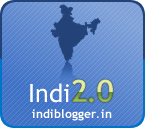Sai Ka Japte Hi Naam Sankat Talte Sabhi Tamaam...
Sai Roop Me Aaye Dekho Shirdi Me Bhagwaan,
Sai Paavan Naam Bhakto Kar Lo Ji Pranaam...
Sai Parvat Ki Uchai Saagar Ki Gehraai,
Sai Suraj Se Chamkila Duniyaa Hai Chamkaai...
Sai Havaa Hai Sai Aag Hai Sai Nirmal Paani,
Sai Mitti Sai Baadal Sai Jindagaani.. .
Sai Phool Hai Sai Khusbu Sai Rang Hazaar,
Jahaa Kabhi Na Patjhad Aaye Sai Sadaa Bahaar...
Sai Raam Hai Sai Shyaam Hai Sai Hai Hanumaan,
Jahaa Devataa Shish Jhukaate Shirdi Hai Vo Dhaam...
Mandiro Ki Aan Raakhe Masjido Ki Shaan,
Gurudwaare Kaa Noor Sai Girjaa Kaa Sammaan...
Hindu Jisko Raam Maane Momin Kahe Rahmaan,
Sikh Kahte Waahe Guru, Isaai Ishu Naam...
Jo Dekhe Jis Roop Me Sai Wo Hi Roop Dhare,
Kabhi Kahe Sai Allaa-Allaa Krishna Hare-Hare...
Sai Brahmaa Ki Srushti Hai Shiv Ji Kaa Vardaan,
Sai Vishnu Ki Leelaa Hai Ajar Amar Sai Naam...
Sai Allaah Kaa Bandaa Hai Rahe Fakiri Shaan,
Jo Masjid Ki Minaaro Par Gaataa Rahe Ajaan...
Sai Raadhaa Kaa Pyaar Hai Aur Meeraa Kaa Tyaag,
Sai Tulsi Kabirsur Ke Pado Me Kartaa Vaas...
Sai Raam Ki Raamaayan Hai Aur Shyaam Ki Gitaa,
Sai Quraan Kaa Kalmaa Bhi Hai Sai Hanumaan Chaalisaa...
Sai Ganesh Ki Ridhhi-Siddhi Laxmi Kaa Subh Laabh,
Sai Swaastik Ke Mangal Mein Okaar Kaa Naad...
Sai Shankh Ke Paavansur Me Mangiraa Jhankaar,
Sai Ghanto Ki Gunjan Me Teri Jay-Jaykaar. ..
Sai Gangaa Ke Paani Me Bahtaa Re Haridwaar,
Sai Chandan Ki Khushbu Hai Mahkaaye Ye Sansaar...
Sai Roli Sai Mouli Sai Pavitra Jainau,
Sai Pooja Kaa Tikaa Hai Sai Maataa Gau...
Sai Aarti Sai Namaaj Sai Hai Ardaas,
Sai Dhyaan Hai Sai Gyaan Hai Sai Hai Prakaash...
Sai Kamal Hai Rajnigandhaa Sai Phool Gulaab,
Sai Neem Hai Sai Peepal Sai Bargad Naath...
Sai Pandit Sai Moulvi Sai Sant Fakir,
Sai Paadari Sai Granthi Sai Moula Pir...
Sai Id Hai Sai Diewaali Sai Christmas Raat,
Sai Teej Hai Sai Lohadi Sai Puraan Maas...
Sai Guru Ki Vaani Me Hai Sai Saadhu Vaas,
Sai Gayatri Mantra Sai Maha Mryutyunjay Jaap...
Sai Saakar Roop Bhi Hai Sai Niraakaar,
Sai Brahma Kaa Gyaani Saadaa Jeevan Uchh Vichaar...
Sai Mamtaa Ki Murat Hai Sai Pitaa Kaa Pyaar,
Sai Isht Ki Aaraadhanaa Sai Hai Suvichaar...
Sai Dhoop Me Chhaayaa Hai Aur Baadal Me Barsaat,
Sai Samay Kaa Sammohan Hai Sai Hai Din Raat...
Sai Suraj Sai Chandaa Ssai Taare Hazaar,
Sai Nav Grah Ki Shakti Me Leelaa Aprampaar...
Sai Poojaa Sai Rojaa Sai Meri Namaaz,
Sai Jap Me Sai Tap Me Sach Me Sai Kare Nivaas...
Sai Yagna Hai Sai Havan Hai Sai Aahuti,
Sai Gangaa Saagar Hai Aur Sai Baahubali...
Sai Saadhak Sai Saadhnaa Sai Mahaa Bali,
Sai Allaah Sai Moulaa Sai Ali Ali...
Sai Dhadkan Sai Saanse Sai Mishri Dali,
Sai Sonaa Chaandi Anguthi Nagon Jadi...
Sai Seva Sai Meva Karma Kaa Hai Fal,
Sai Saat Suro Ki Sargam Nila-Nila Jal...
Sai Ved Hai Sai Puraan Sai Guno Ki Khaan,
Sai Bhakti Hai Sai Shakti Hai Sai Hai Vardaan...
Sai Atmaa Sai Sharir Sai Mast Fakir,
Allaa-Allaa Bole Jholi Me Sabki Takdir...
Sab Dharmo Ko Jisne Joda Sai Vo Janjir,
Sai Ko Chinta Saare Jag Ki Harta Hai Jo Pir...
Sahaj Hi Darshan De Bhakto Ko Ye Sai Ki Rit,
Jo Sai Par Shradhhaa Rakhte Unki Hoti Jeet...
Sai Bhatko Ki Chintaa Me Duba Hai Din Raat,
Sai Karodo Aankhen Teri Sai Laakho Haath...
Sai Sankat Mochan Ban Ke Sankat Taalo Aaj...
Sai Tumse Dukhiyaaro Kaa Tute Naa Vishwaas...
Aaj Samay Hum Par Bhaari Giri Dukho Ki Gaaj,
Jag Ke Paalanhaar Sai Tere Haatho Me Hai Laaj...
Jo Ye Sankar Mochan Japta Ban Sai Kaa Daas,
Kshan Me DarshanDete Sai Sar Par Rakhte Haath...
Sai Ne Likhvaayaa Sab Kuch Meri Kya Aukaat,
Is Rachnaa Ke Har Shabd Par Sai Ka Hi Vaas...
Shri Sadguru Sai Nath Maharaj Ki Jai
Sai Nathay Arpanastu
Anant Koti Brahmand Nayak
Raja Dhi Raj Yogi Raj Para Brahma
Shri Sachidanand Sadguru
Sai Nath Maharaj Ki Jai!!!



